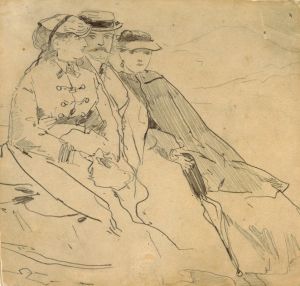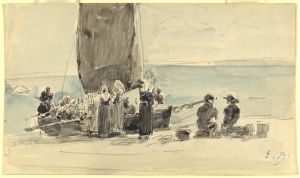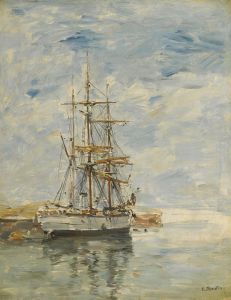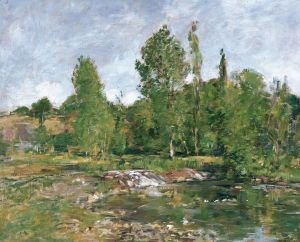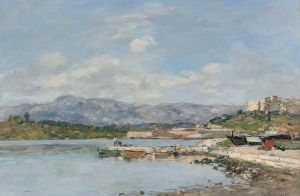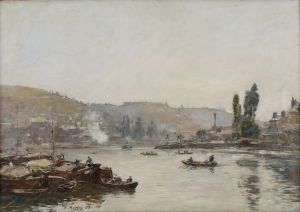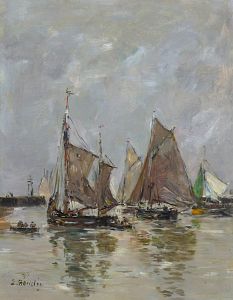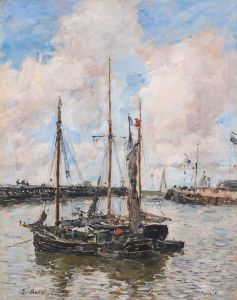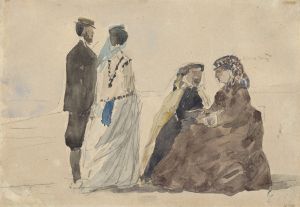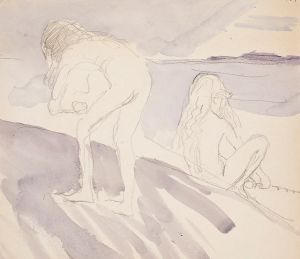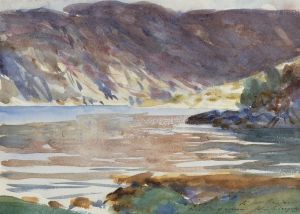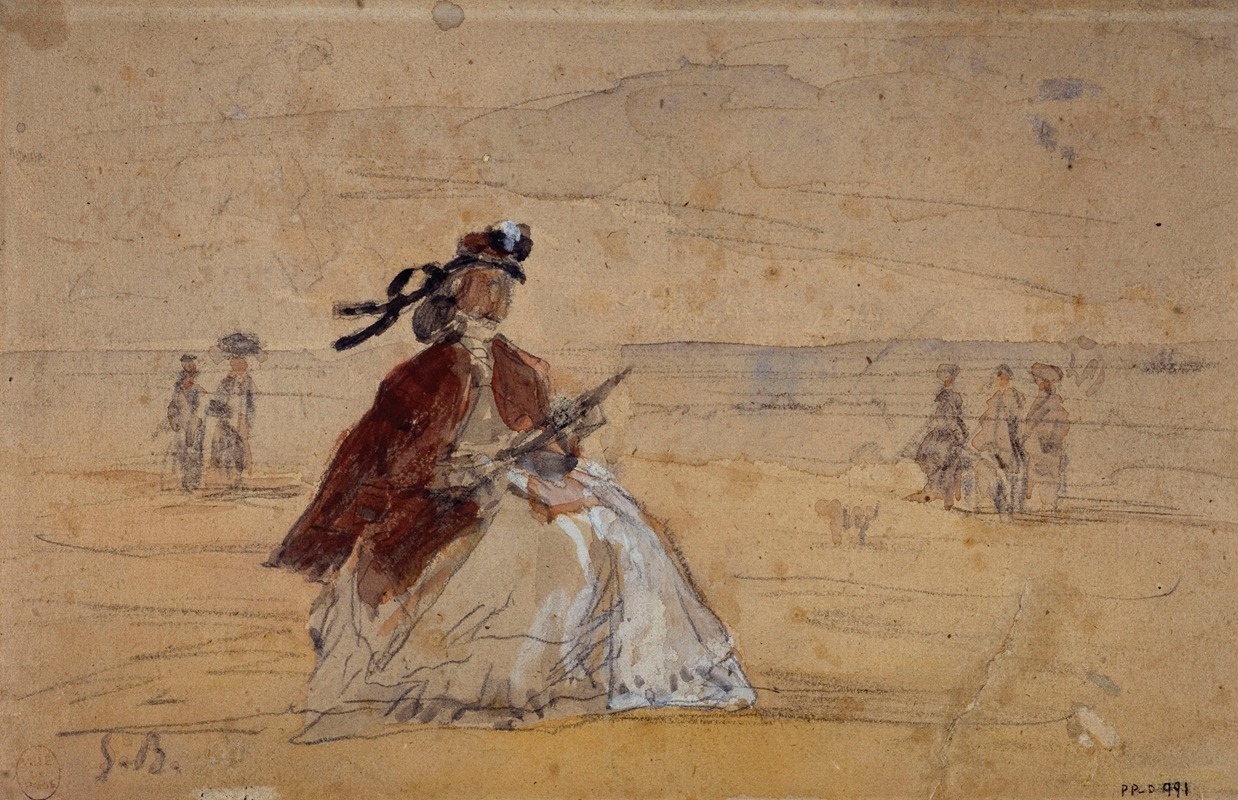
Femme assise au bord de la mer
A hand-painted replica of Eugène Boudin’s masterpiece Femme assise au bord de la mer, meticulously crafted by professional artists to capture the true essence of the original. Each piece is created with museum-quality canvas and rare mineral pigments, carefully painted by experienced artists with delicate brushstrokes and rich, layered colors to perfectly recreate the texture of the original artwork. Unlike machine-printed reproductions, this hand-painted version brings the painting to life, infused with the artist’s emotions and skill in every stroke. Whether for personal collection or home decoration, it instantly elevates the artistic atmosphere of any space.
Eugène Boudin, a French painter known for his significant contributions to the development of Impressionism, created the artwork "Femme assise au bord de la mer" (translated as "Woman Seated by the Sea"). Boudin, born in 1824 in Honfleur, France, was celebrated for his depictions of coastal scenes, skies, and the interplay of light and atmosphere. His works often featured figures in natural settings, capturing the essence of leisure and the beauty of the outdoors.
"Femme assise au bord de la mer" exemplifies Boudin's characteristic style, showcasing his ability to blend human presence with the natural environment. The painting depicts a woman seated near the sea, a recurring theme in Boudin's oeuvre. The figure is portrayed in a relaxed pose, suggesting a moment of quiet contemplation or leisure. The surrounding landscape, likely inspired by the beaches and coastal areas of Normandy, reflects Boudin's keen observation of nature and his mastery of rendering light and color.
Boudin was particularly noted for his plein air (outdoor) painting technique, which allowed him to capture the transient effects of light and weather. This approach influenced many of his contemporaries, including Claude Monet, who regarded Boudin as a mentor. In "Femme assise au bord de la mer," the artist's attention to atmospheric detail is evident in the soft, diffused light and the subtle gradations of color in the sky and water.
The exact date of creation for "Femme assise au bord de la mer" is not definitively documented, but it aligns with Boudin's broader body of work, which often focused on seaside themes. The painting reflects the artist's interest in the interaction between humans and their environment, a subject that resonated throughout his career.
Today, Eugène Boudin's works are celebrated for their role in bridging the gap between the Barbizon School and the Impressionist movement. His dedication to capturing the ephemeral qualities of nature and his influence on subsequent generations of artists have secured his place in art history. While specific details about the provenance or current location of "Femme assise au bord de la mer" may not be readily available, the painting remains an important example of Boudin's artistic legacy.








